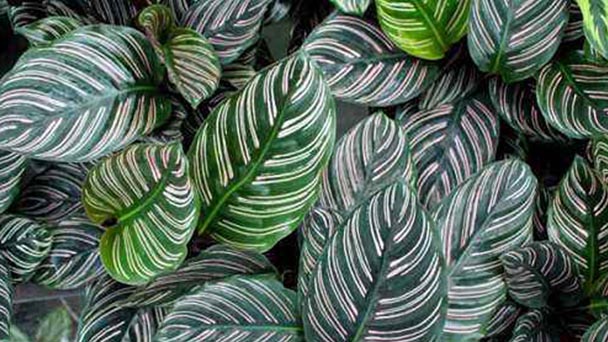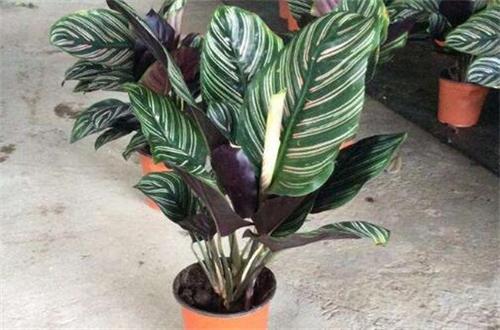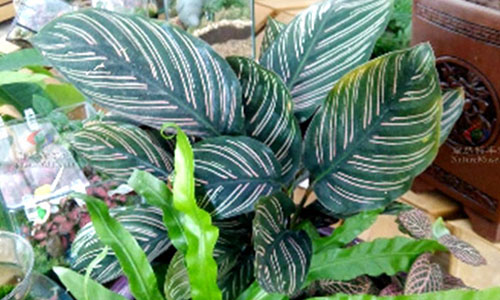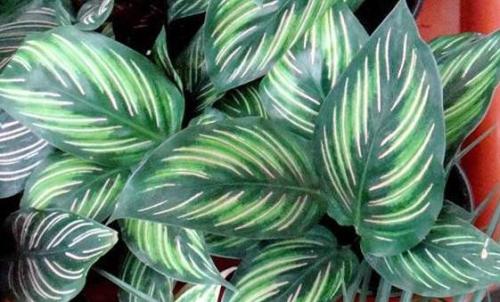How to grow Calathea sanderiana
Written by Maggie
Nov 26 2020

Farming Calathea Sanderiana uses sandy loam, which is less prone to flooding. The temperature during the growing period is controlled between 18 ℃ and 24℃. Water dry and thoroughly, but make sure to have high humidity, and often spray it. Calathea Sanderiana doesn't like bright light, so it can be kept indoors for years with scattered light. Fertilization in the growing period can be a small number of times, thin fertilizer frequently applied.
Calathea Sanderiana picture

1. Calathea Sanderiana Soil requirements
Calathea Sanderiana doesn't like standing water. The cultivated soil should have good drainage, and the sandy soil is the best. If some peat or humus can be more conducive to the growth of the soil, it is suggested to use peat, pond mud and perlite to mix and prepare the culture soil at 3:2:1. The same amount of humus and peat can also be used to grow the double line arrowroot.
2. Calathea Sanderiana's requirements for light and temperature
Calathea Sanderiana doesn't like strong direct sunlight, and doesn't work well in hot environments.The optimal growth temperature for calathea sanderiana is between 18 ℃ and 24℃, which can be maintained indoors for years. Scattered light is enough to grow. Winter temperatures can be low outdoors or sunny places to receive light.
3. Watering requirements of Calathea Sanderiana
During the growing period of Calathea Sanderiana, the growing environment should be kept moist, well watered and accessible, but with high humidity. Spray water every morning and evening to the leaf surface of Calathea Sanderiana, the amount does not need to be too much, wet the leaf on the line.The summer heat can be sprayed several times a day.

4. Fertilization requirements of Calathea Sanderiana
Calathea Sanderiana likes fertilizer, but the root is weaker. We should not fertilize overmuch, because this gives Calathea Sanderiana fertilizer would rather apply a little less, apply a few times more. Fertilizer can use the organic fertilizer of mature or cake fertilizer.
5. Prevention and treatment of Calathea Sanderiana disease
Calathea Sanderiana is prone to diseases during the period of high temperature from July to August in summer, mainly including leaf spot disease and white silky disease. Leaf spot causes a lot of macula on the leaves, and white silky causes the plant to wilt and die. Leaf spot should be removed in time, and the whole plant should be sprayed with chlorothalonil 500 times solution to disinfect leuconia. 70% concentration of pentachloronitrobenzene can be used to disinfect and prevent the culture soil. Maintaining good ventilation can also effectively prevent the occurrence of disease.

Latest Updated
- Benefits of Bugleweed - 7 Science-backed Health Benefits
- Bugleweed Dangers & Side Effects - Is It Poisonous?
- How to Plant Evergreen Trees - What You Should Know
- When to Plant Evergreens - Grow Guide for Evergreen Trees
- 12 Wonderful Evergreen Shrubs for Your Garden
- 12 Popular Evergreen Plants with Pictures for Beginners
- When And How To Prune A Lilac Bush Like a Pro
- How to Grow & Care for Lilac Vine (Hardenbergia Violacea)
- Japanese Lilac Tree (Syringa Reticulata) Care & Propagation Guide
- Shumard Oak Pros and Cons - What to Know
Popular Articles
- Winter maintenance of Antirrhinum Majus
- How to Grow Terminalia Mantaly Tree
- How to Grow and Care for Crossostephium Chinense
- How to grow Antirrhinum Majus in spring
- Peristeria Elata (Dove Orchid) Profile: Info & Care Guide
- Underwatered Snake Plant (Sansevieria Trifasciata) - Signs And How To Fix
- How to Care for Brazilian Jasmine Plant (Mandevilla Sanderi)
- How to Grow & Care for Graptopetalum Purple Delight in Summer
- Rosa Chinensis (China Rose): Plant Growing & Care Tips
- How to Care for Baby Sun Rose (Aptenia Cordifolia)